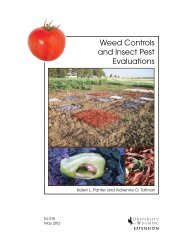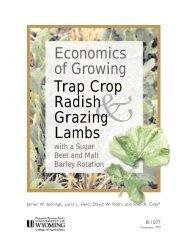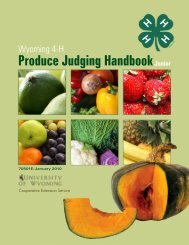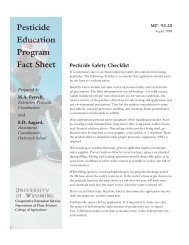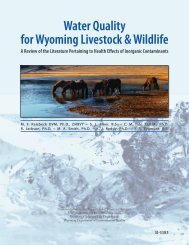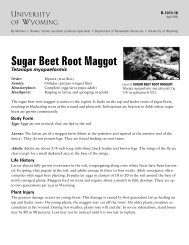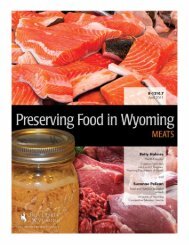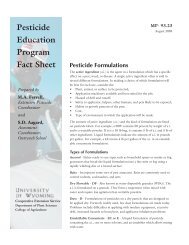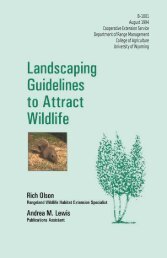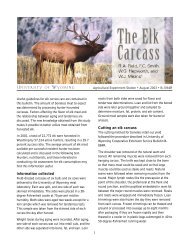Pesticide Labeling
Pesticide Labeling
Pesticide Labeling
Create successful ePaper yourself
Turn your PDF publications into a flip-book with our unique Google optimized e-Paper software.
The chemical name is 4-amino-3,5,6-<br />
trichloropicolinic acid. A pesticide made by<br />
more than one company is sold under several<br />
brand names, but all of them have the same<br />
common name or chemical name.<br />
Manufacturer’s Name and Address<br />
The law requires that the product’s maker or<br />
distributor put the company’s name and address<br />
on the label so you will know who made<br />
or sold the product.<br />
Registration and Establishment Number<br />
A registration number must be on every pesticide<br />
label. An EPA number shows that the<br />
product has been registered with the federal<br />
government. It usually is found on the front<br />
panel of the label and is written as “EPA Registration<br />
No. 0000.” A number assigned to the<br />
establishment where the product is manufactured<br />
must also appear. In cases of special local<br />
needs, pesticide products may be approved by a<br />
state. These registrations are designated, for example,<br />
as EPA SLN No. WY-800004. In this<br />
case, SLN indicates “special local need,” WY-<br />
800004 means the product is registered for use<br />
in Wyoming, was registered in 1980, and was<br />
the fourth special needs product registered in<br />
the state that year.<br />
Net Contents<br />
The net contents number tells you how much<br />
is in the container. If the product is liquid, it<br />
must be stated in liquid measure terms (gallons,<br />
quarts, pints, and fluid ounces). If the product<br />
is a powder or granule, it is stated in terms of<br />
weight (pounds and ounces).<br />
Ingredient Statement<br />
Every pesticide label must list what is in the<br />
product. The amount of each active ingredient<br />
is given as a percentage by weight and as<br />
pounds per gallon of concentrate. It can be<br />
listed by either the chemical name or the common<br />
name. The inert ingredients need not be<br />
named, but the label must show what percent<br />
of the contents they make up.<br />
Kind of Formulations<br />
The basic chemical used to control pests must<br />
be formulated with other materials such as solvents,<br />
emulsifiers, surfactants, powders, granules,<br />
and dusts. The formulation is listed on the<br />
label as an emulsifiable concentrate, wettable<br />
powder, granules, fumigant, and so on. The<br />
same pesticide may be available in more than<br />
one formulation. Formulations, for example,<br />
may be designated on the label as 7E (7 pounds<br />
per gallon emulsifiable liquid), 50-WP (50 percent<br />
wettable powder) or 10-G (10 percent<br />
granular).<br />
Registered Uses<br />
The label must include what specific pests the<br />
pesticide controls, what crops or animals it can<br />
be used on, and the classification of uses. Every<br />
pesticide label must show whether the contents<br />
are for general use or restricted use. The<br />
pesticide’s classification depends on its toxicity<br />
(hazard of poisoning), the way in which it is<br />
used, and its effect on the environment.<br />
General-use pesticides may be applied by the<br />
general public without restriction, other than<br />
those specified on the label.<br />
Restricted-use pesticides require controls in<br />
addition to label instructions because they may<br />
have unreasonable adverse effects on the environment<br />
or injure the applicator; even when<br />
applied in accordance with directions for use,<br />
warnings, and cautions; or when used in accordance<br />
with a widespread or commonly recognized<br />
practice. Labels for restricted-use prod-<br />
2



